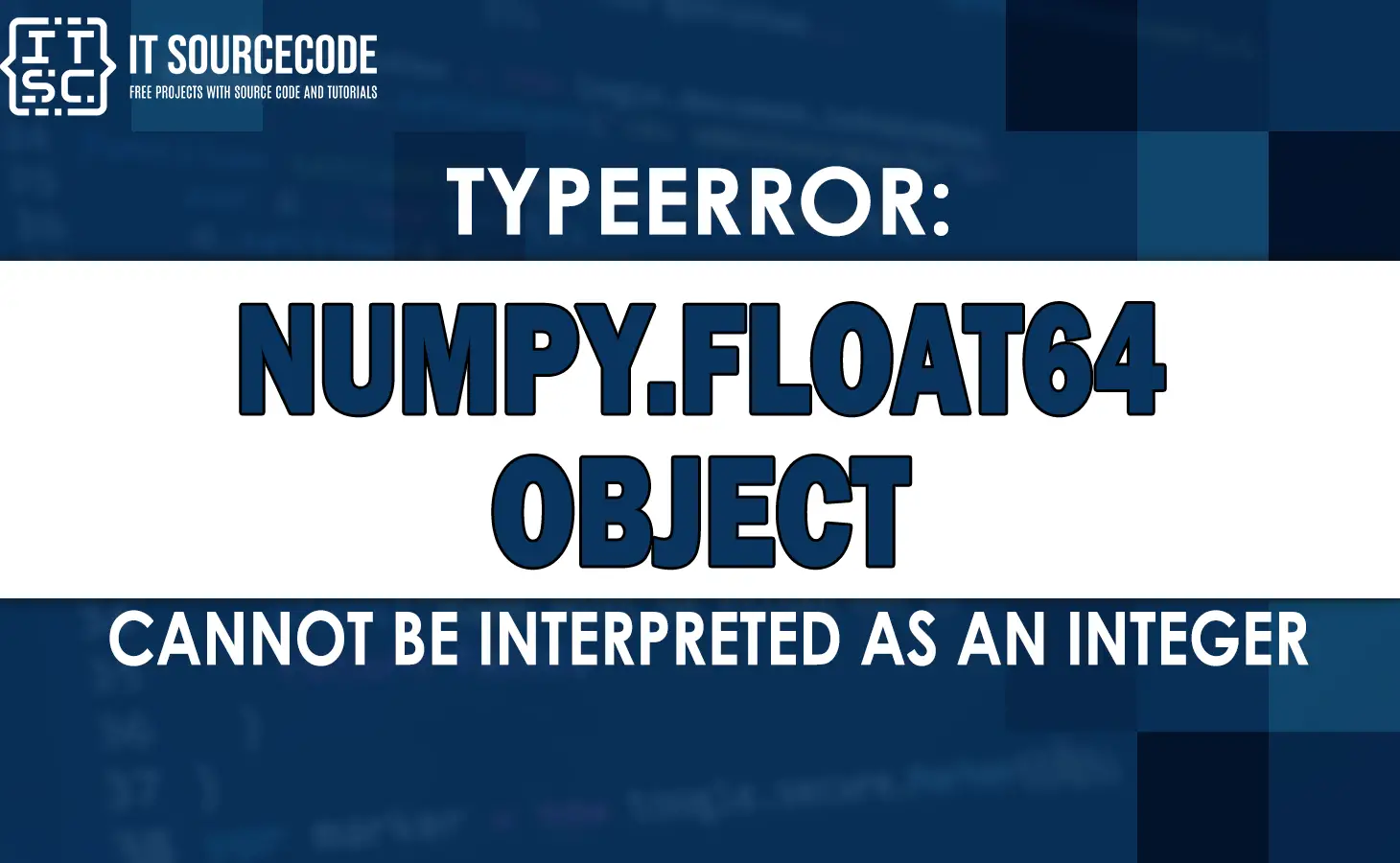One of the common errors you might encounter when you are using a NumPy in Python is TypeError: ‘numpy.float64’ object cannot be interpreted as an integer.
In this tutorial, we will explain to you the reasons of causes of the error and why it occurs.
Why the numpy.float64′ object cannot be interpreted as an integer error occur?
The error numpy.float64′ object cannot be interpreted as an integer typically occurs when you are trying to use a floating-point number where an integer is expected.
In addition, this error occurs because numpy.float64 is a data type that represents real numbers while integers are whole numbers without decimal points.
What are the causes of the error?
The “numpy.float64 object cannot be interpreted as an integer” error occurs if you try to use a floating-point number (e.g., a number with a decimal point) in a place where an integer (i.e., a whole number) is expected.
Here are some common reasons that it causes of this error:
- You’re indexing a NumPy array with a float.
- You are using a float in a range function.
- You are using a float in certain NumPy functions.
- You are using a float as a slice argument.
Example of the code to raise ‘numpy.float64’ object cannot be interpreted as an integer:
import numpy as np
values = np.array([2.3, 6.2, 15.1, 27.7, 18.8, 9.4])
for i in range(len(values)):
print(range(values[i]))Output:
C:\Users\Dell\PycharmProjects\pythonProject\venv\Scripts\python.exe C:\Users\Dell\PycharmProjects\pythonProject\main.py
Traceback (most recent call last):
File “C:\Users\Dell\PycharmProjects\pythonProject\main.py”, line 8, in
print(range(values[i]))
TypeError: ‘numpy.float64’ object cannot be interpreted as an integer
Explanation of the code:
This code is to define an array of values:
values = np.array([2.3, 6.2, 15.1, 27.7, 18.8, 9.4])This code below is using a for loop to iterate through each value in the array and print the range of values at that index
for i in range(len(values)):
print(range(values[i])) We get an error because the range() function is expected an integer, yet the values in the NumPy array are floats.
How to solve the typeerror: ‘numpy.float64’ object cannot be interpreted as an integer?
Now that you already understand the causes of the error.
Next, we will proceed to the solutions on how to solve the error.
There are two solutions to quickly solve the error:
Solution 1: Using the int() Method
The first solution to solve this error is you can use the int() method with the correct argument to convert the numpy.float64 object to an integer.
For example:
import numpy as np
#to define an array of values
values = np.array([2.3, 6.2, 15.1, 27.7, 18.8, 9.4])
#using a for loop to iterate through each value in the array and print the range of values at that index
for i in range(len(values)):
print(range(int(values[i])))
range(0, 2)
range(0, 6)
range(0, 15)
range(0, 27)
range(0, 18)
range(0, 9)In this example, we used the int() function. To convert each float value in the NumPy array to an integer.
Therefore, we can prevent the TypeError we encountered earlier.
Solution 2: Using the .astype(int) method
The last solution to solve the error is to use the .astype(int) method in NumPy.
This is used to convert an array with floating-point values to an array with integer values.
For example:
import numpy as np
#This is to define array of values
values = np.array([2.3, 6.2, 15.1, 27.7, 18.8, 9.4])
#This is to convert array of floats to array of integers
data_int = values.astype(int)
#Using a for loop to print out range of values at each index
for i in range(len(values)):
print(range(int(values[i])))
range(0, 2)
range(0, 6)
range(0, 15)
range(0, 27)
range(0, 18)
range(0, 9)Output:
C:\Users\Dell\PycharmProjects\pythonProject\venv\Scripts\python.exe C:\Users\Dell\PycharmProjects\pythonProject\main.py
range(0, 2)
range(0, 6)
range(0, 15)
range(0, 27)
range(0, 18)
range(0, 9)
In this example, the code imports the NumPy library and defines an array of floating-point values called “values“.
It then converts this array to an array of integers called “data_int” using the “astype” method of NumPy’s ndarray class.
Finally, it uses a for loop to print the range of values at each index of the original “values” array.
Where the range is from 0 up to (but not including) the integer value at that index.
Additional Resources
The following tutorials discuss how to solve other common errors in Python:
- Typeerror: unhashable type: ‘series’
- Typeerror fsevents is not a constructor [SOLVED]
- typeerror: ‘_io.textiowrapper’ object is not subscriptable
- Can’t subtract offset-naive and offset-aware datetimes [FIXED]
Conclusion
To conclude, in this article we’ve explained the common reasons the causes of the error.
Also, we discussed why this error occurs and we provided two methods of solutions to resolve the error.
FAQs
NumPy is a Python library that provides support for large, multi-dimensional arrays and matrices, along with a collection of high-level mathematical functions to operate on these arrays.
This error occurs when you try to use a floating-point number as an integer argument in a NumPy function or array indexing operation. This can happen due to typecasting errors, indexing errors, or incorrect usage of NumPy functions.

